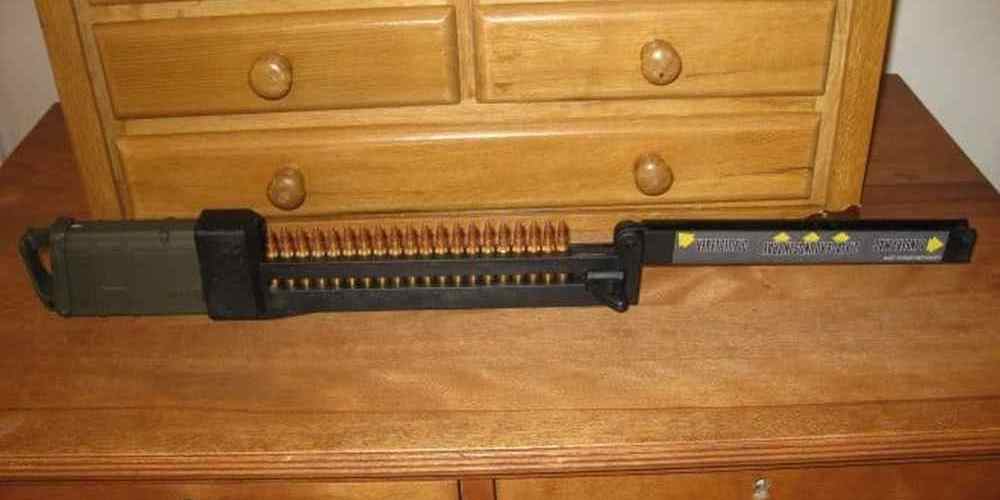“Train for any situation with versatile AR15 magazines.”
Comparing Performance of Steel vs. Polymer AR15 Magazines
When it comes to training with your AR15 rifle, one of the key components to consider is the type of magazine you are using. Magazines come in a variety of materials, with steel and polymer being the most common options. Each material has its own set of advantages and disadvantages, which can impact the performance of your rifle. In this article, we will compare the performance of steel and polymer AR15 magazines to help you make an informed decision on which type of magazine is best for your training needs.
Steel magazines are known for their durability and reliability. They are less prone to cracking or breaking under pressure, making them a popular choice for those who require a magazine that can withstand rough handling. Steel magazines also tend to have a longer lifespan compared to polymer magazines, making them a cost-effective option in the long run. Additionally, steel magazines are less likely to swell or warp when exposed to extreme temperatures, ensuring consistent performance in various environmental conditions.
On the other hand, polymer magazines are lightweight and corrosion-resistant, making them a popular choice for those who prioritize ease of use and portability. Polymer magazines are also less likely to scratch or dent, maintaining their appearance over time. However, polymer magazines may be more prone to cracking or breaking under pressure compared to steel magazines. Additionally, polymer magazines may swell or warp when exposed to extreme temperatures, potentially affecting the feeding and ejection of rounds.
When it comes to training with different AR15 magazines, it is important to consider how the material of the magazine can impact your shooting experience. Steel magazines may offer a more reliable and durable option for those who require consistent performance in various conditions. On the other hand, polymer magazines may provide a lightweight and corrosion-resistant option for those who prioritize ease of use and portability.
In order to determine which type of magazine is best for your training needs, it is recommended to test both steel and polymer magazines with your AR15 rifle. Pay attention to how each magazine feeds and ejects rounds, as well as how it performs under different environmental conditions. By comparing the performance of steel and polymer magazines side by side, you can make an informed decision on which type of magazine is best suited for your training needs.
In conclusion, training with different AR15 magazines can help you adapt to magazine variability and improve your shooting skills. Steel magazines offer durability and reliability, while polymer magazines provide lightweight and corrosion-resistant options. By testing both types of magazines with your AR15 rifle, you can determine which type of magazine best suits your training needs. Remember to consider factors such as durability, reliability, and ease of use when selecting a magazine for your AR15 rifle.
Pros and Cons of Drum Magazines for AR15 Training
When it comes to training with AR15 rifles, one of the key components to consider is the type of magazine you will be using. Drum magazines are a popular choice for many shooters due to their high capacity and ease of use. However, like any piece of equipment, there are both pros and cons to using drum magazines for AR15 training.
One of the biggest advantages of drum magazines is their high capacity. Most drum magazines can hold anywhere from 50 to 100 rounds of ammunition, allowing shooters to spend more time training and less time reloading. This can be especially beneficial for competitive shooters or those training for self-defense scenarios where every round counts.

In addition to their high capacity, drum magazines are also known for their reliability. Unlike traditional box magazines, which can sometimes jam or misfeed, drum magazines are designed to feed ammunition smoothly and consistently. This can be a huge advantage when training, as it allows shooters to focus on their marksmanship skills without worrying about malfunctions.
Another benefit of drum magazines is their ease of use. Loading a drum magazine is typically a quick and simple process, requiring only a few steps to fill the magazine to capacity. This can save shooters time and frustration, especially during high-stress training scenarios where speed is of the essence.
However, despite their many advantages, drum magazines do have some drawbacks that shooters should be aware of. One of the biggest drawbacks is their size and weight. Drum magazines are typically larger and heavier than traditional box magazines, which can make them more cumbersome to carry and handle during training sessions.
Additionally, drum magazines can be more expensive than traditional box magazines, which can be a deterrent for shooters on a budget. While the initial investment may be higher, the long-term benefits of using a reliable and high-capacity magazine may outweigh the cost for some shooters.
Another potential downside to using drum magazines is their compatibility with different AR15 rifles. Some drum magazines may not fit all AR15 models, which can be frustrating for shooters who own multiple rifles or who train with different firearms. It’s important to do your research and ensure that the drum magazine you choose is compatible with your specific rifle before making a purchase.
In conclusion, drum magazines can be a valuable tool for AR15 training, offering high capacity, reliability, and ease of use. However, shooters should be aware of the potential drawbacks, such as size, weight, cost, and compatibility issues. By weighing the pros and cons of drum magazines and considering your specific training needs, you can make an informed decision on whether or not to incorporate drum magazines into your AR15 training regimen.
Training Drills for Quick Magazine Changes with Different AR15 Magazines
When it comes to training with your AR15, one of the most important skills to master is the quick and efficient changing of magazines. This skill can mean the difference between life and death in a high-pressure situation. However, many shooters overlook the importance of training with different types of AR15 magazines.
Magazine variability is a common issue that many shooters face. Different manufacturers produce magazines with varying shapes, sizes, and materials, which can affect how smoothly they feed ammunition into your rifle. Training with a variety of magazines can help you adapt to these differences and ensure that you can quickly and effectively change magazines in any situation.
One of the best ways to train with different AR15 magazines is to practice magazine changes during dry fire drills. Start by loading your magazines with dummy rounds or snap caps, then practice quickly removing and replacing them in your rifle. Pay attention to how each magazine feels in your hands and how smoothly it inserts into the magwell. This will help you get a feel for the different magazines and how they function with your rifle.
Another important aspect of training with different AR15 magazines is practicing magazine changes under stress. Set up a timer or have a training partner call out random commands to simulate a high-pressure situation. This will help you develop muscle memory and ensure that you can change magazines quickly and efficiently, even when under pressure.
It’s also important to practice magazine changes from different positions. Try practicing magazine changes while standing, kneeling, and prone to simulate real-world shooting scenarios. This will help you adapt to different shooting positions and ensure that you can change magazines quickly and effectively, no matter the situation.
In addition to practicing magazine changes, it’s also important to regularly inspect and maintain your magazines. Check for any signs of wear or damage, such as cracked feed lips or weak springs, and replace any magazines that show signs of wear. Keeping your magazines in good condition will ensure that they function properly when you need them most.
Training with different AR15 magazines may seem like a small detail, but it can make a big difference in your shooting performance. By practicing magazine changes with a variety of magazines, you can adapt to magazine variability and ensure that you can quickly and effectively change magazines in any situation. So next time you hit the range, don’t forget to bring along a few different magazines and incorporate magazine change drills into your training routine. Your shooting skills will thank you.
Exploring Compatibility Issues with Aftermarket AR15 Magazines
When it comes to training with your AR15 rifle, one of the key components to consider is the magazine. The magazine is what holds and feeds the ammunition into the rifle, so it’s crucial to have a reliable and compatible magazine for your firearm. However, with the wide variety of aftermarket AR15 magazines available on the market, compatibility issues can arise. In this article, we will explore the importance of training with different AR15 magazines and how to adapt to magazine variability.
One of the main reasons why it’s important to train with different AR15 magazines is to ensure that your rifle functions properly with various types of magazines. Different magazines may have different designs, materials, and capacities, which can affect how they feed ammunition into the rifle. By training with different magazines, you can test the reliability and compatibility of each magazine with your rifle.
Another reason to train with different AR15 magazines is to adapt to magazine variability. Not all magazines are created equal, and some may have slight differences in dimensions or features that can affect how they fit and function in your rifle. By training with different magazines, you can learn how to adapt to these differences and make adjustments as needed to ensure smooth and reliable operation of your rifle.
When training with different AR15 magazines, it’s important to pay attention to how each magazine performs in your rifle. Some magazines may feed ammunition more smoothly than others, while others may have issues with feeding or jamming. By testing different magazines, you can identify any potential issues and make adjustments to your rifle or magazine selection as needed.
In addition to testing the functionality of different AR15 magazines, training with different magazines can also help you become more familiar with how each magazine operates. Some magazines may have unique features or loading mechanisms that require practice to master. By training with different magazines, you can become more proficient in using each magazine and improve your overall shooting skills.
One of the best ways to train with different AR15 magazines is to conduct regular drills and exercises that involve changing magazines quickly and efficiently. This can help you become more comfortable with handling and reloading different magazines under pressure, which is essential for real-world shooting scenarios. By practicing with different magazines, you can improve your speed and accuracy in changing magazines and ensure that you are prepared for any situation.
In conclusion, training with different AR15 magazines is essential for adapting to magazine variability and ensuring that your rifle functions properly with various types of magazines. By testing the functionality of different magazines, becoming familiar with how each magazine operates, and practicing magazine changes, you can improve your shooting skills and be better prepared for any situation. So next time you hit the range, don’t just stick to one magazine – mix it up and train with different AR15 magazines to become a more versatile and proficient shooter.
Tips for Proper Maintenance and Care of Various AR15 Magazines
When it comes to owning an AR15 rifle, proper maintenance and care of your magazines is essential to ensure reliable performance. One aspect of magazine maintenance that is often overlooked is training with different types of AR15 magazines. Adapting to magazine variability can help you become a more versatile shooter and prevent malfunctions during crucial moments.
One of the first things to consider when training with different AR15 magazines is understanding the differences between various types of magazines. There are many different manufacturers and styles of AR15 magazines on the market, each with its own unique features and characteristics. Some magazines may have a different follower design, spring tension, or feed lip geometry, which can affect how they function in your rifle.
To adapt to magazine variability, it is important to test different magazines in your rifle to see how they perform. This can help you identify any magazines that may be causing feeding issues or malfunctions. By training with a variety of magazines, you can become familiar with how each one functions and learn how to quickly troubleshoot any problems that may arise.
Another tip for training with different AR15 magazines is to practice proper loading and unloading techniques. Different magazines may require slightly different methods for loading and unloading ammunition, so it is important to familiarize yourself with the specific requirements of each magazine. By practicing these techniques regularly, you can ensure that you are able to quickly and efficiently reload your rifle in any situation.
In addition to loading and unloading, it is also important to practice proper maintenance and care of your magazines. Regularly cleaning and inspecting your magazines can help prevent malfunctions and ensure reliable performance. Make sure to remove any dirt, debris, or corrosion from your magazines, and replace any worn or damaged parts as needed.
When training with different AR15 magazines, it is also important to pay attention to how the magazines interact with your rifle. Some magazines may fit more snugly or loosely in your magazine well, which can affect how they feed ammunition into your rifle. By testing different magazines in your rifle, you can determine which ones work best and make any necessary adjustments to ensure proper function.
Overall, training with different AR15 magazines is an important aspect of becoming a proficient shooter. By adapting to magazine variability and practicing proper maintenance and care, you can ensure that your magazines function reliably and prevent malfunctions during critical moments. So, take the time to test different magazines in your rifle, practice loading and unloading techniques, and regularly clean and inspect your magazines to keep them in top condition. By following these tips, you can become a more versatile shooter and enjoy reliable performance from your AR15 rifle.





